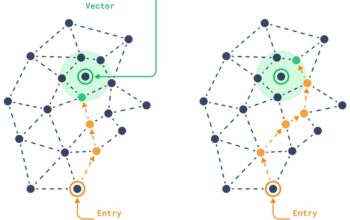Deep tech breakthroughs in semiconductors often take decades to mature. From lithography platforms to new materials and quantum architectures, the timelines required to move discoveries from lab benches to commercial deployment extend well beyond the five- to seven-year windows favored by traditional venture capital. The mismatch between investment horizons and technological realities leaves some of the most transformative opportunities underfunded. Subsidies help, but they are time-limited and vulnerable to political cycles. What is needed is a funding model designed for endurance. An evergreen fund operated under the National Semiconductor Technology Center (NSTC) could provide such stability, reinvest returns and operate with a multi-decade vision. Erik Hosler, a strategist in semiconductor finance models, highlights that patient capital is essential for breakthroughs that are too risky for conventional markets. His perspective highlights why sustained, risk-tolerant capital is now a strategic necessity.
Unlike one-time grants or expiring subsidies, evergreen funds recycle returns into new projects, compounding their impact over time. By structuring a 20-year, risk-tolerant investment vehicle, the NSTC can ensure continuous support for technologies that may not deliver returns for decades but are critical to long-term competitiveness. The goal is not simply to fill funding gaps, but to create a stable ecosystem where ambitious ideas have the time and resources they need to succeed.
The Funding Gap for Deep Tech
The challenge of financing deep tech in semiconductors is well documented. Developing a new lithography technique or scaling a quantum computing platform requires sustained investment in research, prototyping, and manufacturing infrastructure. These costs can run into the billions, with payoffs uncertain and timelines measured in decades.
Traditional venture capital, focused on software or consumer technologies, rarely accommodates such horizons. Investors often demand rapid growth, short exit cycles, and high returns. While this model has fueled innovation in many sectors, it is poorly suited for semiconductors, where failure rates are high and breakthroughs require patience.
This funding gap means many ideas, whether in materials, packaging, or compute paradigms, never progress beyond early research. Without patient capital, the U.S. risks ceding leadership in areas that define the future of computing.
Why Evergreen Matters
Evergreen funds address this challenge by reinvesting returns rather than distributing them to shareholders or ending with a fixed horizon. It creates a self-sustaining capital pool that can weather market fluctuations and political cycles. Over time, the compounding effect ensures that early successes finance future opportunities, creating continuity in support for risky technologies.
This stability matters. Deep tech development does not follow smooth trajectories. There are setbacks, pivots, and long stretches of incremental progress. An evergreen structure provides the patience needed to navigate these realities without prematurely pulling the plug.
It also signals long-term commitment. For researchers, startups, and private investors, the presence of an evergreen fund demonstrates that public institutions are serious about sustaining innovation. It encourages co-investment, leveraging public dollars with private capital.
Structuring an NSTC Evergreen Fund
Designing an evergreen fund under the NSTC requires balancing flexibility with accountability. A few key principles stand out.
First, the fund should adopt a 20-year investment horizon. That provides sufficient time for projects like quantum computing, neuromorphic architectures, and next-generation lithography to mature. Shorter horizons would undermine the fund’s very rationale.
Second, governance must be professional and transparent. While the NSTC should set strategic priorities, fund management should be handled by experts with experience in both finance and technology. It ensures that decisions are guided by both fiscal discipline and technical insight.
Third, the fund should blend government seed capital with private co-investment. Public dollars can de-risk early stages, encouraging private investors to participate. Over time, returns from successful ventures should be reinvested, ensuring the fund grows rather than depletes.
Finally, investment should be stage-gated. Projects that meet milestones receive additional funding, while those that falter are reevaluated. This approach balances patience with accountability, ensuring that resources are not wasted on ideas with no path to viability.
Aligning with Allies
Semiconductor innovation is global, and sustaining leadership requires coordination with allies. An NSTC evergreen fund could serve as a model for joint investment vehicles across trusted nations. By pooling resources, allies could share risks, reduce redundancy, and accelerate progress in areas of mutual interest.
For example, joint evergreen funds could target lithography, materials discovery, or packaging infrastructure. Facilities funded through these vehicles could be shared by researchers and startups across allied nations, expanding access while strengthening trust. Such coordination would also reduce the likelihood that adversarial nations exploit gaps in funding or coordination.
Allied investment models reinforce the idea that semiconductors are not just economic assets but strategic ones. By aligning long-term funding mechanisms, the U.S. and its partners can ensure that deep tech innovation remains within secure networks.
Long-Term Competitiveness
Patient capital is not merely about financing, but about enabling innovation across sectors. Deep tech breakthroughs in semiconductors often require collaboration between materials science, physics, computer engineering, and manufacturing. Without stable funding, these interdisciplinary efforts collapse under the weight of uncertainty.
Erik Hosler explains, “It’s going to involve innovation across multiple different sectors.” His point highlights why evergreen funds matter. Multi-sector innovation cannot be rushed or forced into short-term profit models. It requires patience, integration, and continuity, qualities that an evergreen structure can provide.
Long-term competitiveness depends on building an ecosystem where ambitious projects are not abandoned midstream. By structuring funding mechanisms that endure beyond political cycles, the U.S. can secure leadership in technologies that will shape the next century of computing.
Financing the Future
The CHIPS and Science Act provided an essential down payment on U.S. semiconductor competitiveness, but its impact will be limited if funding is episodic. Sustained, reinvested capital is needed to support projects that span decades. An evergreen fund under the NSTC represents a pragmatic, forward-looking solution.
By adopting a 20-year horizon, reinvesting returns, and balancing public and private capital, such a fund could transform how the U.S. finances semiconductor innovation. It would bridge the gap between research and commercialization, ensuring that promising ideas have the time and resources to reach maturity.
Financing the future requires more than subsidies. It requires structures that endure, adapt, and grow. Evergreen funds embody this philosophy, providing patient capital for deep tech innovation. For the U.S. and its allies, building these mechanisms is not just a financial decision, but a strategic imperative for leadership in semiconductors and advanced computing.








